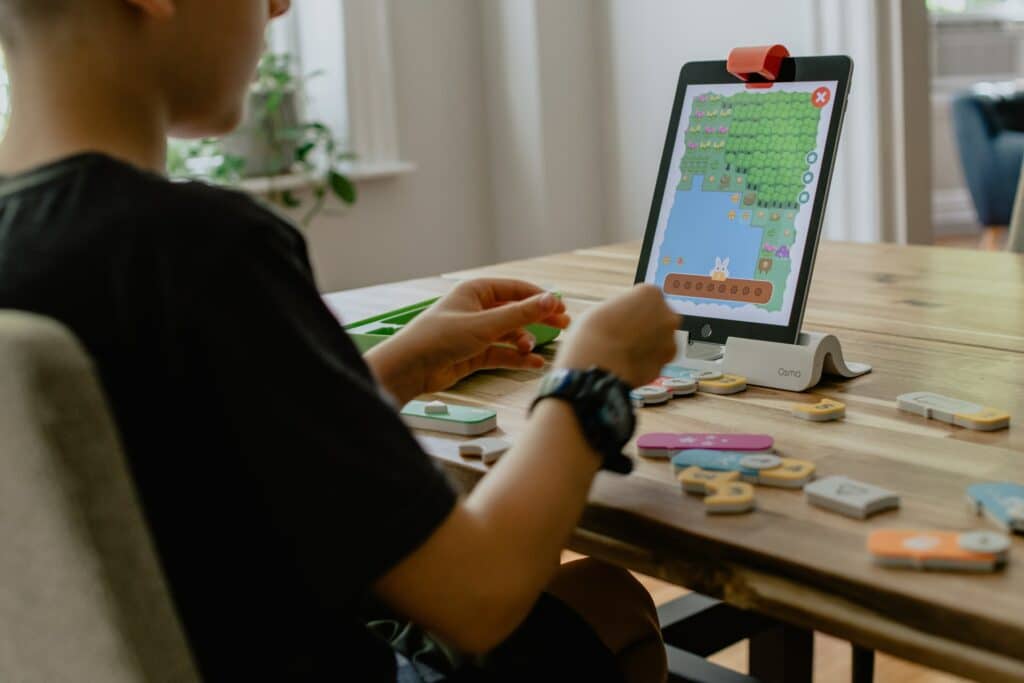Tech Tips for Remote Teaching
This year has given a whole new meaning to the word ‘homework’ as educators around the globe have gotten to grips with remote teaching.
With most schools having to offer at least some remote classes now, online teaching is becoming a daily part of the job. If you’re new to the world of learning from home, here’s the XSplit guide to the basics of online remote teaching – from your tech needs to student engagement tips.
So best smile on, pets in another room, and all non-essential browsers closed. Here we go.
Get the right tech
Impressive as it might seem, you don’t need the full influencer green-screen-type set-up. You’ll be fine with a decent laptop or desktop that runs at a reasonable speed (Core i5 or faster, and 8GB or more of RAM), and make sure you have a reliable router. If you have any issues with connectivity, put your hand up now and make sure your school IT team is aware.
If you’re planning live lessons, you’ll need a webcam and microphone. Most newish laptops have reasonable integrated cameras and mics, although you may want to use something like a Logitech camera on a tripod to get your best angle. Take a look at our guide to the types of cameras available for online presentations.
In addition to tech, your other physical consideration is the background. You can add our XSplit VCam to platforms like Zoom, Microsoft Teams, and Skype, enabling you to blur out your kitchen cupboards or add a calm, non-distracting background. Or if you want to mix it up, a quirky background could even become a feature of some lessons.
Bear in mind that not all children have access to devices or the internet. If we’re talking about learning from home during lockdown or self-isolation, it’s not as simple as popping around to the library. You might need to print and post worksheets, so consider adding a simple printer to your tech must-have list.

An app for the teacher
What apps, software, and platforms are available to help you? Thankfully, the answer is “plenty”.
Your school may have subscribed to educational software such as Canvas, which works with sharing platforms. This means that lessons can be integrated with learning materials and assignments. When it comes to free educational tools, Google Classroom and Moodle are great options that help teachers and students manage file sharing.
Platforms like Zoom and Blackboard Collaborate let you broadcast, share, and record lessons, plus you can stream PowerPoint presentations. Students can also share their screens, and you can set up small breakout groups. Our XSplit Broadcaster was originally designed for vloggers and gamers, but nowadays it’s also proving popular among teachers who want seamless presentations. We also have XSplit Presenter, our new software dedicated to giving effective and fun presentations, currently in public beta!
As well as the classes themselves, there are plenty of easy-to-use apps to supplement your lessons, which you might already be using. Programs like MyMaths and the award-winning Hegarty Maths for older pupils are great for checking the understanding of topics, while platform game-style apps like SumDog help to engage younger children.
For quick and easy topic introductions, you can keep it simple with age-appropriate online quizzes. Don’t feel that any of these resources are shortcuts, though. Take all the remote teaching support that you can, especially if you have the double-whammy of managing online learning for self-isolating pupils while continuing to teach normal classes.

Engaging older students
Any teacher knows that teenage students can be spirited, to say the least, so it helps to have an action plan for when you’re not present in person to keep things running smoothly.
A day or so before the first class, send through straightforward login instructions and a few guidelines. Be really clear about your expectations. Learning from home requires the same protocols as it does in the classroom: respectful language, courtesy, no interruptions, and for any nonessential devices (such as mobile phones) to be put away or switched off.
In an ideal world, students connect from a calm space – realistically, this isn’t always possible. Ask them to mute their mics unless they need to speak, to prevent distracting background noise for their fellow students. You can use Zoom’s polling tools for quick-and-easy responses to questions.
A great way to encourage engagement is through small breakout groups. Set them a definite task or topic to discuss (they can work on something collaborative like Google Docs). And yes, make it enjoyable. Have a ‘Bring Your Pet to Class’ session, or try the school equivalent of the Zoom Pub Quiz. Consider recording the lesson to share with the class afterward.
Before rushing pupils to log in, ask yourself: does this need to be a live class? You can record short presentations or webinars on XSplit Broadcaster to introduce students to the topic, then set them further work.
If you have children with additional needs in your class, seek advice from the experts at your school and, if possible, speak with their parents. Some children may feel uncomfortable staring into their peers’ faces on Zoom, while others may blossom in a remote teaching situation.

Making learning from home fun
And now to the less tech-savvy but equally demanding younger learners. Like their teenage counterparts, children need to know the rules of online learning. The usual rules, such as hands up to answer questions, will help create a feeling of normality.
Keep online interaction time short for young attention spans, and if you have the capacity, teaching smaller groups is easier with primary-aged children. Be mindful that parents will need to supervise younger learners – another good reason to keep live sessions short.
As you embrace this new way of working, remember that there’s a lot of fun to be had with learning from home. You can embed short films or audiobooks into your lessons, or simply read them a story – just like you would at the end of the day in a regular class. Set plenty of off-screen activities for them to report back on, and show-and-tell type sessions work brilliantly online, too. Use the platform’s polling functions to set up multiple choice quizzes about the topics, or challenge older kids to create their own. This is also a great opportunity to encourage younger children to develop their IT skills.
Top tip: if you usually work with a teaching assistant, have them as your co-pilot during any live sessions. That way, should your connection go down, there’s still an adult in the Zoom. Imagine what could happen if your hosting defaulted to an over-excited eight-year-old…
Finally, remember that you’re learning from home, too. Don’t expect this whole new way of working to slide into place immediately. Be open-minded and willing to adapt teaching methods and topics.
At the same time, make sure you’re confident with your remote teaching setup. Practice on friends and colleagues before launching into the world of live streaming lessons. Don’t use tech you’re not comfortable with; and if there are any problems, you still have the backup of your usual school support team. Make the most of live streaming software – for example, find out how our VCam is helping other educators.
